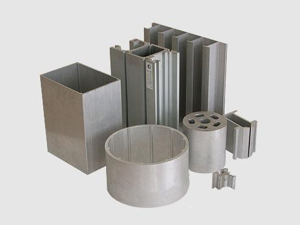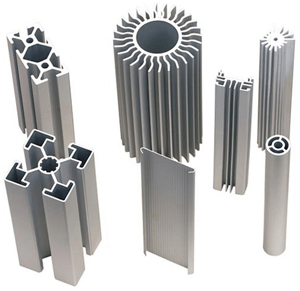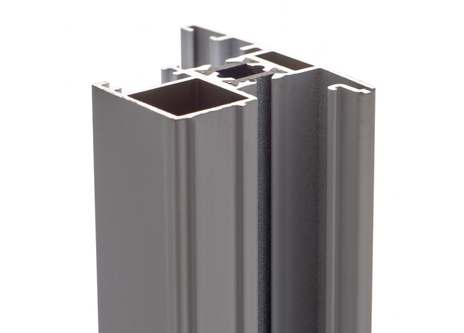Content Menu
● Understanding Aluminum Extrusion Costs
● Typical Cost Breakdown
● Factors Affecting Pricing
● Aluminum Extrusion Companies in California
● The Aluminum Extrusion Process
● Applications of Aluminum Extrusions
● Environmental Considerations
● Trends Influencing Aluminum Extrusion Costs
● Conclusion
● FAQ
>> 1. What is the average cost per pound for aluminum extrusion in California?
>> 2. How much does tooling for an aluminum extrusion die typically cost?
>> 3. Are there minimum order quantities for aluminum extrusions?
>> 4. What additional services can I expect from aluminum extrusion companies?
>> 5. How long does it take to produce custom aluminum extrusions?
Aluminum extrusion is a manufacturing process that shapes aluminum alloy into specific cross-sectional profiles by forcing it through a die. This technique is widely used in various industries, including construction, automotive, and aerospace, due to aluminum's lightweight, durability, and resistance to corrosion. In California, a hub for manufacturing and innovation, understanding the costs associated with aluminum extrusion is crucial for businesses looking to utilize this versatile material.

Understanding Aluminum Extrusion Costs
The cost of aluminum extrusion in California can vary significantly based on several factors. Here are some key elements that influence pricing:
1. Material Costs
The price of aluminum itself fluctuates based on market conditions. In recent years, the cost of aluminum has ranged from $1.60 to over $12 per pound depending on the type of alloy and market demand. For instance, common alloys like 6063-T5 are popular for their excellent extrudability and are often used in architectural applications.
The global aluminum market is influenced by various factors including supply chain disruptions, changes in demand from major industries, and geopolitical events. For example, tariffs on imported aluminum can lead to increased domestic prices.
2. Tooling Charges
One of the most significant costs in the aluminum extrusion process is the tooling or die cost. Creating a custom die can range from $1,750 to over $5,000 depending on the complexity and size of the profile being extruded. This upfront investment is crucial as it determines the shape and dimensions of the final product.
Tooling charges can be amortized over larger production runs; therefore, companies that anticipate high volumes may find that their per-unit costs decrease significantly as they spread the tooling cost over more units.
3. Production Volume
The volume of production plays a critical role in determining the overall cost per unit. Typically, manufacturers have minimum order quantities ranging from 1,000 to 2,000 pounds. Larger orders can reduce the per-pound cost significantly due to economies of scale.
For businesses considering aluminum extrusion projects, it's essential to evaluate their projected needs carefully. If a company expects to require multiple runs of a product, it may be more economical to invest in custom tooling for better pricing on larger quantities.
4. Additional Services
Many aluminum extrusion companies in California offer additional services such as machining, finishing (anodizing or powder coating), and assembly. Each of these services incurs additional costs but can enhance the functionality and aesthetics of the final product.
- Machining: This includes cutting, drilling, or milling extruded profiles to meet specific design requirements.
- Finishing: Anodizing or powder coating not only improves corrosion resistance but also allows for aesthetic customization.
Typical Cost Breakdown
Here's a simplified breakdown of potential costs associated with aluminum extrusion in California:
- Material Costs: $1.60 - $12 per pound
- Tooling Charges: $1,750 - $5,000 (one-time fee)
- Machining/Finishing: Varies based on requirements (typically $0.50 - $2 per pound)
- Shipping/Logistics: Depending on distance and weight
Factors Affecting Pricing
Several other factors can influence pricing beyond those mentioned:
- Complexity of Design: More intricate designs require more advanced tooling and longer production times.
- Lead Time: Rush orders may incur additional fees.
- Quality Standards: Higher quality standards may require more rigorous testing and inspection processes.
Aluminum Extrusion Companies in California
California is home to numerous reputable aluminum extrusion companies that cater to various industries. Some notable companies include:
- Zetwerk: Known for its high-quality custom extrusions and advanced manufacturing capabilities.
- Hydro Extrusion: Offers extensive customization options and complete manufacturing solutions under one roof.
- OD Metals: Specializes in custom aluminum profiles for architectural and industrial applications.
These companies often provide extensive support throughout the design process to ensure that customers receive products that meet their specifications while also being cost-effective.
The Aluminum Extrusion Process
Understanding how aluminum extrusion works can provide insights into its costs:
1. Heating the Billet: The aluminum billet is heated to approximately 900°F (482°C) to make it malleable.
2. Extrusion: The heated billet is then forced through a steel die using a hydraulic press.
3. Cooling: Once extruded, the aluminum cools rapidly before being cut into desired lengths.
4. Finishing: Post-extrusion treatments like anodizing or powder coating may be applied for enhanced durability.
This process allows manufacturers to create complex shapes with high precision while maintaining material integrity.
Applications of Aluminum Extrusions
Aluminum extrusions are utilized across various sectors due to their versatility:
- Construction: Used in window frames, curtain walls, and structural components.
- Automotive: Lightweight parts that improve fuel efficiency.
- Aerospace: Components that require high strength-to-weight ratios.
In addition to these traditional applications, aluminum extrusions are increasingly being used in renewable energy sectors such as solar panel frames and wind turbine components due to their lightweight properties and resistance to environmental degradation.

Environmental Considerations
Aluminum is highly recyclable, making it an environmentally friendly choice for manufacturers. Many companies in California focus on sustainable practices by using recycled aluminum in their extrusion processes.
The recycling process for aluminum requires only about 5% of the energy needed to produce new aluminum from ore, significantly reducing overall environmental impact. This aspect not only contributes positively to sustainability efforts but also helps mitigate costs associated with raw material procurement.
Trends Influencing Aluminum Extrusion Costs
Several trends are currently influencing the costs associated with aluminum extrusion:
- Technological Advancements: Innovations in manufacturing technologies have improved efficiency and reduced waste during the extrusion process.
- Increased Demand for Lightweight Materials: As industries seek lighter materials for energy efficiency—especially in automotive and aerospace sectors—the demand for aluminum extrusions continues to rise.
- Supply Chain Challenges: Recent global events have highlighted vulnerabilities in supply chains which can affect material availability and costs.
Understanding these trends can help businesses anticipate changes in pricing and adjust their strategies accordingly.
Conclusion
The cost of aluminum extrusion in California is influenced by multiple factors including material prices, tooling charges, production volume, and additional services required. Businesses looking to leverage aluminum extrusions should carefully consider these elements when budgeting for their projects.
As California continues to be a leader in manufacturing innovation, understanding these costs will help companies make informed decisions about their materials and suppliers.

FAQ
1. What is the average cost per pound for aluminum extrusion in California?
The average cost can range from $1.60 to over $12 per pound depending on various factors such as alloy type and market conditions.
2. How much does tooling for an aluminum extrusion die typically cost?
Tooling costs can range from $1,750 to over $5,000 based on the complexity and size of the die required for production.
3. Are there minimum order quantities for aluminum extrusions?
Yes, many manufacturers have minimum order quantities ranging from 1,000 to 2,000 pounds.
4. What additional services can I expect from aluminum extrusion companies?
Many companies offer additional services such as machining, finishing (anodizing or powder coating), and assembly which may incur extra costs.
5. How long does it take to produce custom aluminum extrusions?
Lead times can vary but typically range from a few weeks up to a month depending on production schedules and order complexity.






















